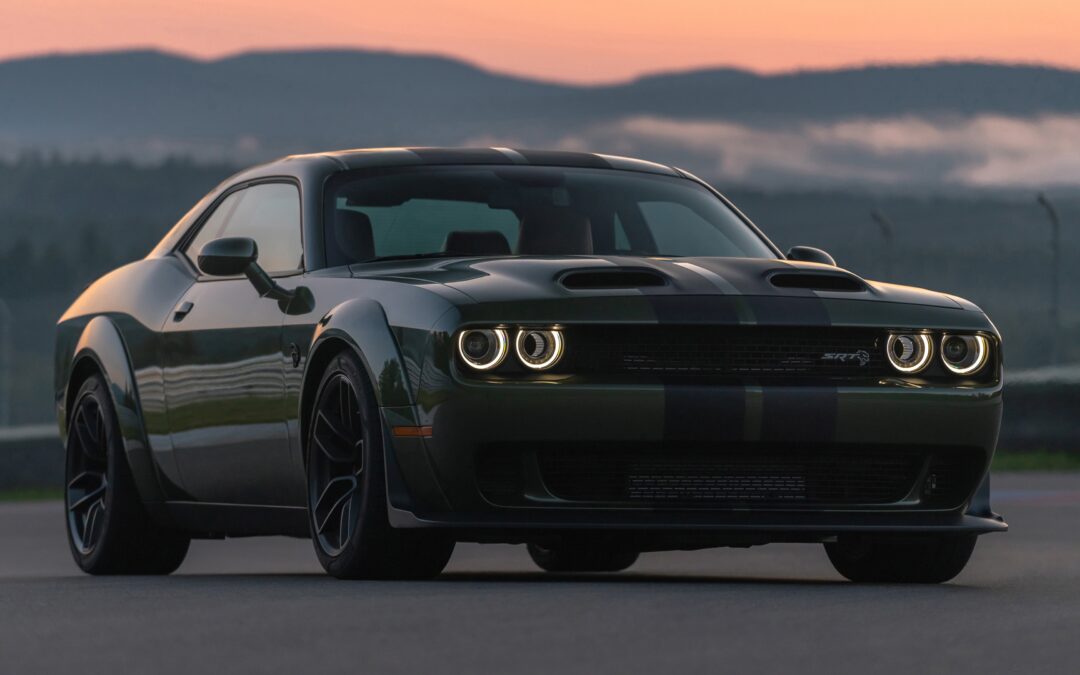Dodge Challenge is an American muscle car that is an icon with enthusiasts. Whether you are intrigued by its raw V8 power, its aggressive styling, or the limitless customizing ability, there is a true wonder about its legacy. This guide covers the history of this muscle car as well as performance-enhancing options and some buying tips which will aid you in making the most of this powerful machine.
A Brief History of the Dodge Challenger
In 1970, the Dodge manufacturer launched the Dodge Challenger to the streets amid the muscle car wars of the golden era. Quickly fitting in beside the Ford Mustang and the Chevrolet Camaro, the Challenger gained status from magic carpets like the HEMI-engines along with its bravely daring design. Over the years Dodge kept refining the Challenger, introducing modern innovations while staying true to its classic roots.
The 1970 Dodge Challenger has stood pivotal ever since then, and trim levels like the T/A (Trans Am) and R/T (Road/Track) churn out heaps of power here. Today, the Hellcat and the Redeye create a thirst for the deadly version of that much-needed power and performance.
Performance and Engine Options
One of the biggest appeals of the Dodge Challenger is its impressive lineup of engines. From the base V6 to the monstrous supercharged Hellcat V8, there’s a Challenger for every type of driver.
Engine Options:
- 3.6L Pentastar V6 – 305 HP, ideal for those looking for a balance of performance and efficiency.
- 5.7L HEMI V8 – 375 HP, providing the classic muscle car rumble.
- 6.4L HEMI V8 (Scat Pack) – 485 HP, a perfect middle ground for power enthusiasts.
- 6.2L Supercharged Hellcat V8 – 717+ HP, an absolute beast on the road.
- 6.2L Supercharged Hellcat Redeye V8 – 797 HP, built for speed demons.
No matter which engine you choose, the Challenger delivers exhilarating performance and an unforgettable driving experience.
Popular Upgrades and Modifications
One of the biggest advantages of owning a Dodge Challenger is the ability to customize it to fit your style and performance needs. Here are some of the most popular modifications:
1. Performance Upgrades
- Cold Air Intakes – Improves airflow and boosts horsepower.
- Performance Exhaust Systems – Enhances sound and increases power output.
- ECU Tuning – Adjusts engine parameters for maximum performance.
- Supercharger Kits – Adds significant horsepower gains for extreme speed.
2. Exterior Mods
- Custom Wheels and Tires – Wider tires (e.g., 315mm tires) for improved grip and stance.
- Aerodynamic Upgrades – Front splitters, rear spoilers, and diffusers for better performance and aesthetics.
- Custom Paint Jobs – Unique color schemes, including classic 1970 Dodge Challenger paint chart references.
3. Interior Enhancements
- Dash Upgrades – Digital displays and custom dash trims.
- Racing Seats and Harnesses – Improved comfort and safety for performance driving.
- Audio and Infotainment – Upgraded speakers and touchscreen units.
Buying Tips for a Dodge Challenger
When you are looking at buying a Dodge Challenger, here are some issues worth considering, whether it’s brand new or seasoned.
- Model Preferences
Classic Vs. Modern: Is one looking for a vintage, muscle-bound 1970s Challenger or the hi-tech modern version?
Daily Driver Vs. Track Car: See if you need to drive in a comfortable daily driver or a high-performance track car.
Budget Considerations: Challengers come in anything from basic V6 models to Hellcats.
- Key Characteristics To Look For
Mileage and Maintenance Records: This is most important while you are buying a used model.
Aftermarket Modifications: Check and make sure that the owner has not upgraded them just to make the car go faster or just look nice.
Engine Condition: If you are seeing one with a higher mileage, inquire if the engine has been taken good care of.
- Top Places to Buy
Showroom Places: Best highlights for certification programs and warranty issues.
Private Sellers: The dealer wins accolades over offering you the best experiences-rated with poor pre-sales inspection services.
Conclusion
A Dodge Challenger is not simply a muscle car, a machine made for the sheer purpose of demonstrating power, performance, and modern styling. So, if you are the first-time purchaser, or immediately a diehard fan, its historical perspective, the different engines, possible modifications, and hints on how to go ahead will go a long way. Complemented by the endless customized options one can throw onto it, and the power put in it, the Challenger is one of the ultimate supreme choices on the asphalt and the hearts of car lovers worldwide.
Also Read: Navigating the Future: A Comprehensive Guide to Self Driving Car Technology

